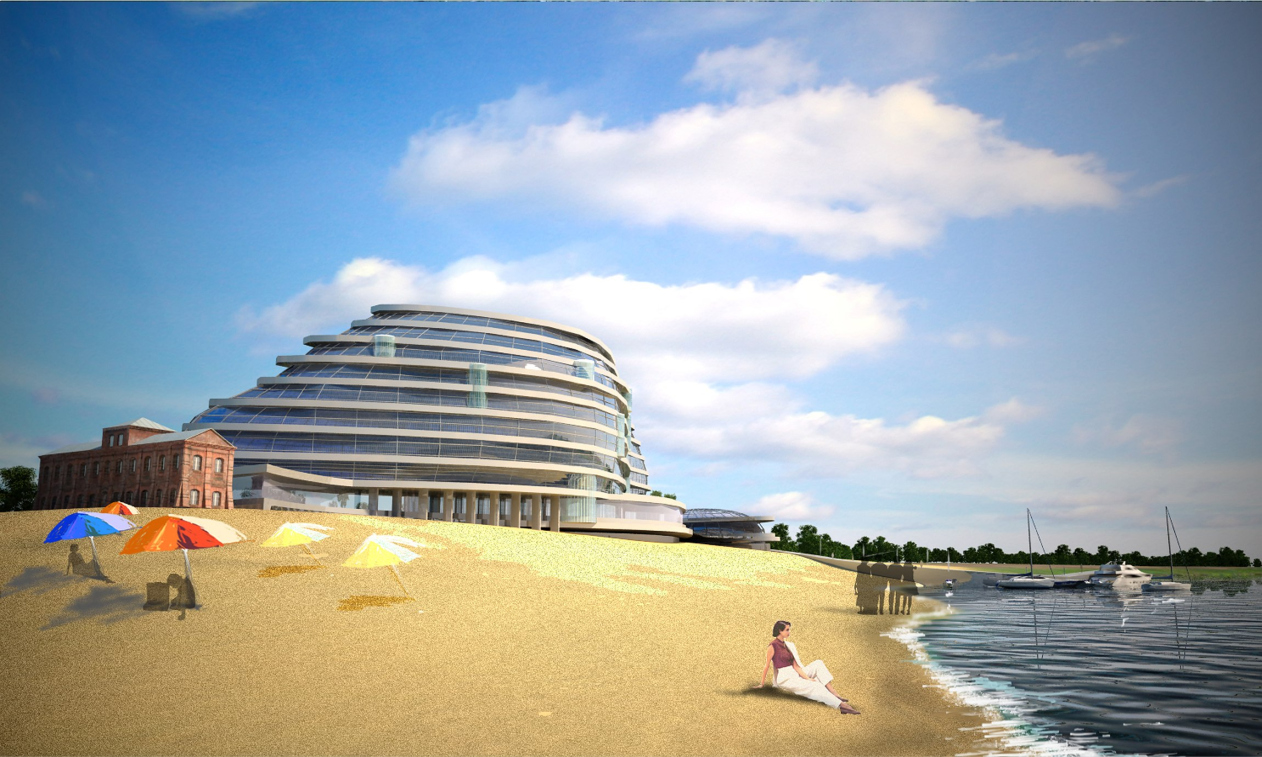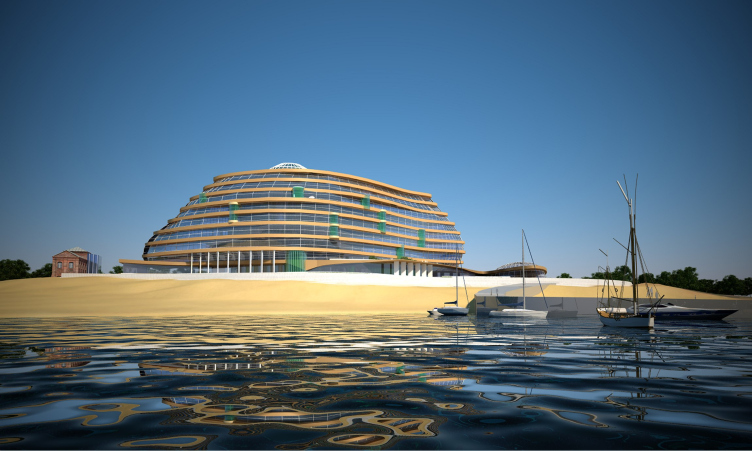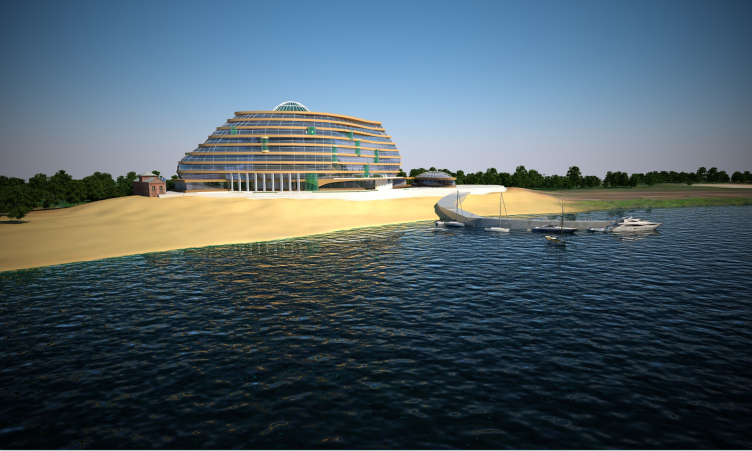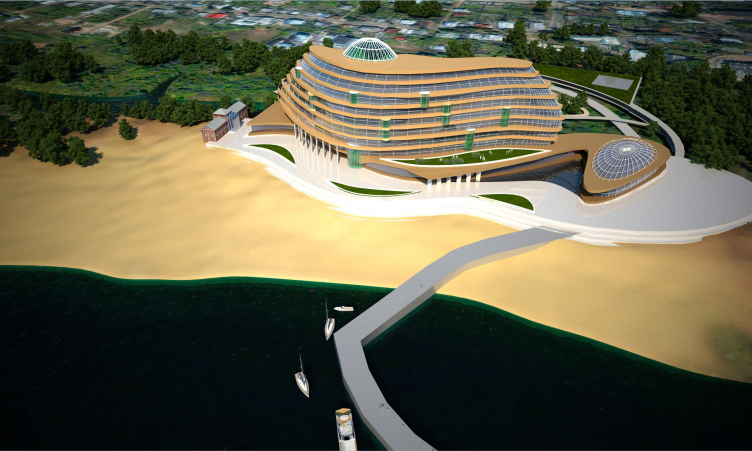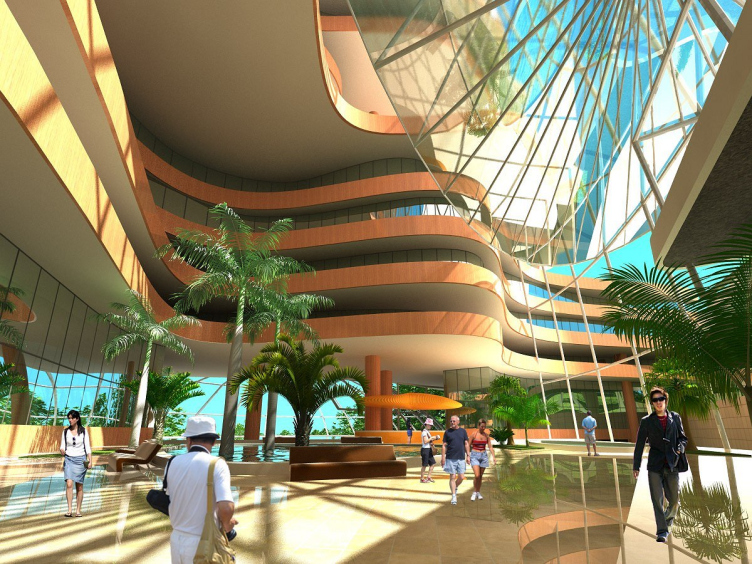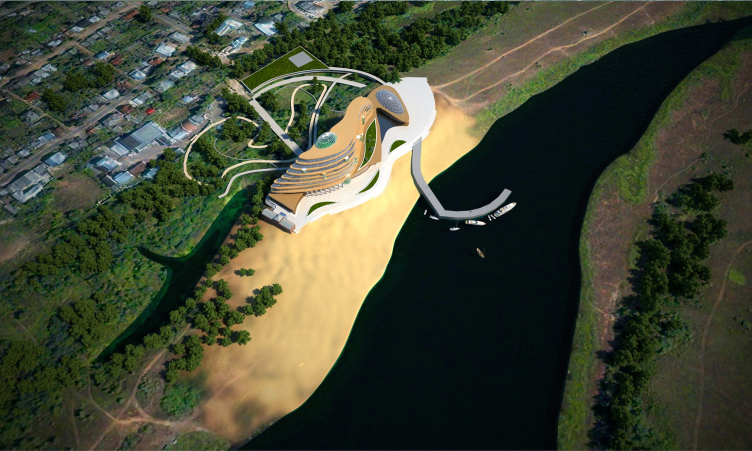Glass Dune
Along the left bank of the Volga river, opposite to Nizhny Novgorod Kremlin, not yet developed, soon there will grow a modern tourist and business center. The project of this mixed-use facility was designed by PTAM Vissarionov. The architects interpreted Kremlin vis-а-vis as a giant dune of glass.
